Key takeaways:
- Geotags enhance visual storytelling on Instagram, connecting users to specific locations and fostering community interactions.
- Privacy settings are crucial; users should manage their geotag visibility and consider the implications of sharing their location.
- Delaying posts and using generic location tags can protect privacy while still allowing for content sharing.
- Building a privacy-focused Instagram profile involves reviewing personal information settings and being selective with follower requests.
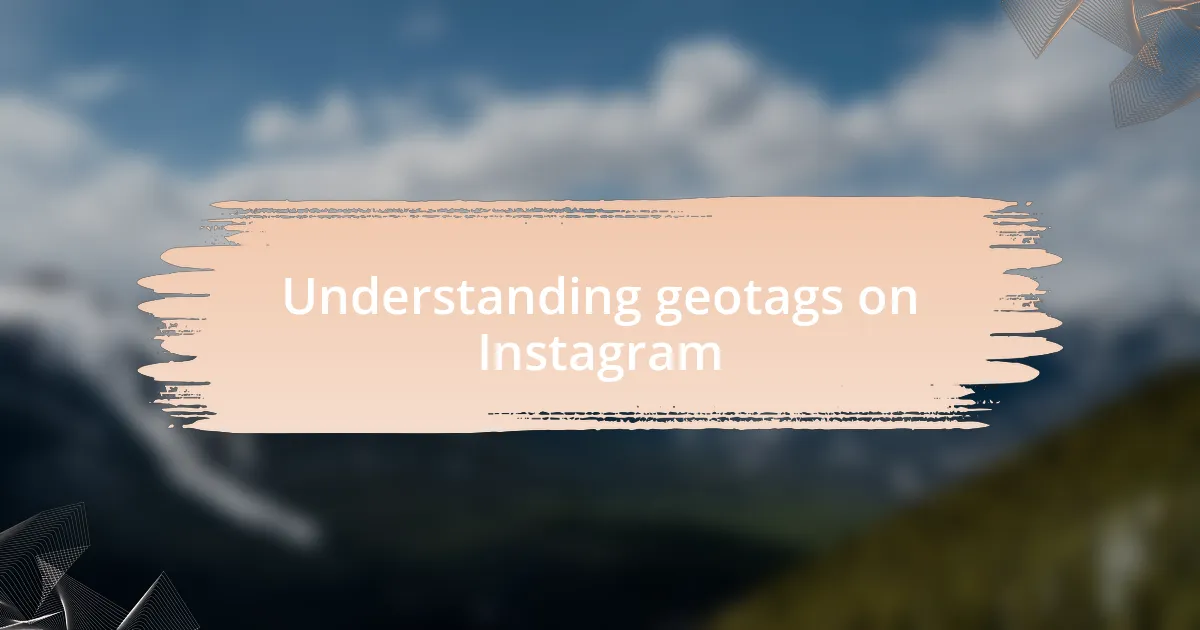
Understanding geotags on Instagram
Geotags on Instagram serve as a powerful means of connecting images to specific locations, offering context and a deeper layer to the visual storytelling. I remember my first time using a geotag—I posted a sunset photo from a remote beach, and suddenly, I felt an overwhelming sense of connection to the wider world. Have you ever considered how sharing your location can transform a simple image into a shared experience?
When you add a geotag to your post, it not only places your photo on the map but also invites strangers and friends alike to discover where you’ve been. I often find myself exploring geotags for hidden gems in my city, leading me to charming cafes or stunning viewpoints that I might not have found otherwise. It makes me think: how much do we miss out on when we overlook the power of location-based sharing?
Furthermore, geotags can create a sense of community among users. For instance, attending an event and tagging it helps others not only to relive those moments but also to engage in conversations with shared interests. Have you ever seen a post with the same geotag and felt an instant connection to someone else’s experience? It’s fascinating to see how a simple tag can bridge distances and spark connections, isn’t it?

Managing geotag settings on Instagram
When it comes to managing geotag settings on Instagram, the first step begins in the app’s settings menu. I remember the moment I realized how crucial it was to check those settings before sharing a post—once, I accidentally exposed my exact location while vacationing, and it made me rethink the privacy of my adventures. Have you ever worried about who might see your location when you share?
To adjust your geotag settings, navigate to the “Privacy” section, where you can control whether your location is visible to the public or only to your followers. I often toggle between being precise and vague with my location based on the context of my posts; it’s interesting how a minor tweak can either invite connections or protect my privacy. Have you ever considered whether your settings reflect your comfort level with sharing?
Moreover, Instagram allows you to turn off the location tagging feature altogether, which I find liberating when wanting to share moments without the geographical stamp. I once posted a lovely brunch photo, and by keeping it general, I focused on the aesthetic rather than where I was. This choice not only protected my privacy but also invited viewers to engage with the content itself—so what do you prioritize in your posts: the experience or the location?
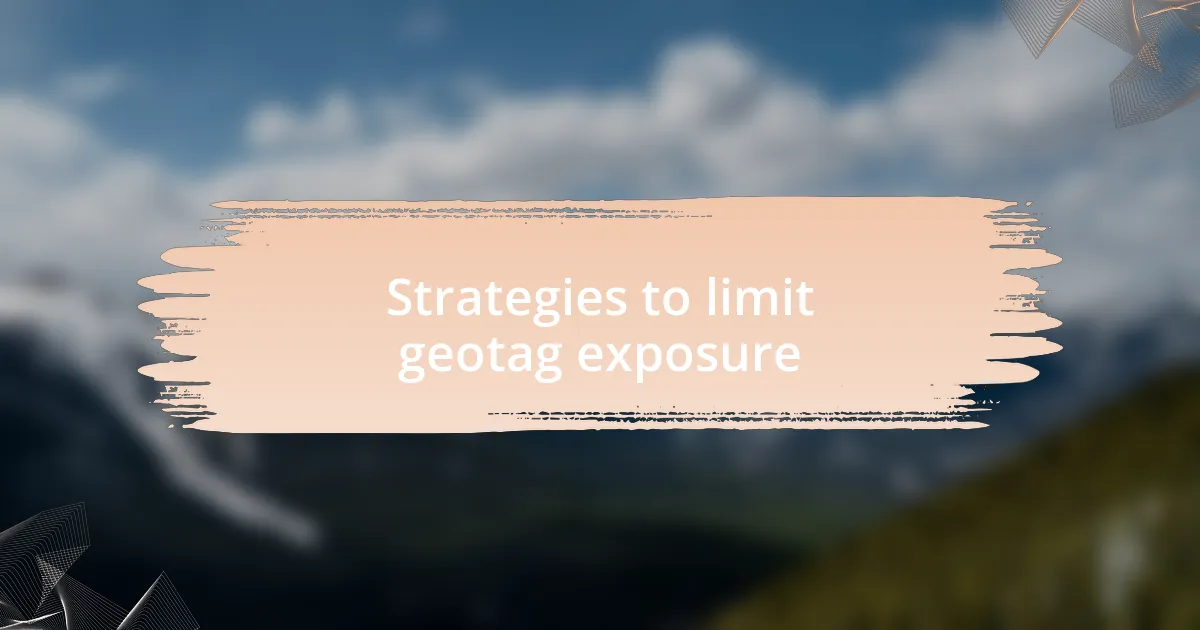
Strategies to limit geotag exposure
One effective strategy I’ve adopted is to create generic location tags, like “City X” instead of a specific neighborhood. I learned this after a friend faced unwanted attention after tagging a specific café. It really made me think—how often do we sacrifice our safety for the sake of sharing a beautiful moment?
Another approach I find valuable is to wait before posting. Sometimes, I take my time to share a photo, especially if it captures a temporarily private event. This gives me a chance to assess whether revealing that location still feels right days later. Have you ever hesitated about sharing a memorable moment because it was too tied to a specific place?
Lastly, I always encourage friends to double-check their tagging before they share. I had a friend once tag me in a location that was too specific, and it made me question how much our digital footprints reveal. It’s surprising how a simple click can expose us, isn’t it? Together, reminding each other to be mindful can really enhance our collective privacy.
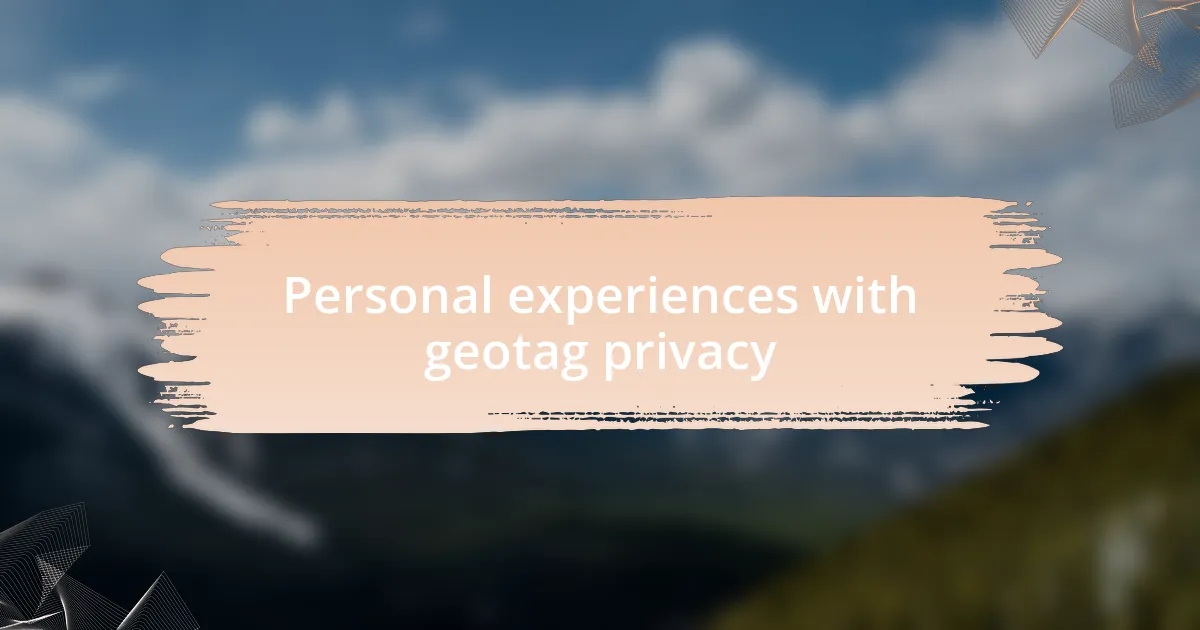
Personal experiences with geotag privacy
I had an experience a while back that really opened my eyes to geotag privacy. After posting a scenic sunset shot from a well-known tourist spot, I unexpectedly received a message from someone I hadn’t spoken to in years, asking if I was in town. This encounter left me a bit unsettled. I started to wonder—how many people were tracking my whereabouts through my photos?
Another time, I posted a fun day at the beach, but I hesitated to include the exact location. Instead, I opted for a more general tag. Reflecting on this choice later, I felt a sense of relief that I didn’t share too much information. It’s a small adjustment, yet it can make a significant difference in protecting my personal space. Have you ever felt that same hesitation when sharing?
I also recall a conversation I had with a friend about checking our tagged photos. They mentioned feeling anxious after realizing a specific tag had been used, and that made me think about how easily our daily lives become public. It just reinforced the idea that we should not take our digital safety lightly. How many times have you thought about the implications of a simple tag before hitting ‘post’?
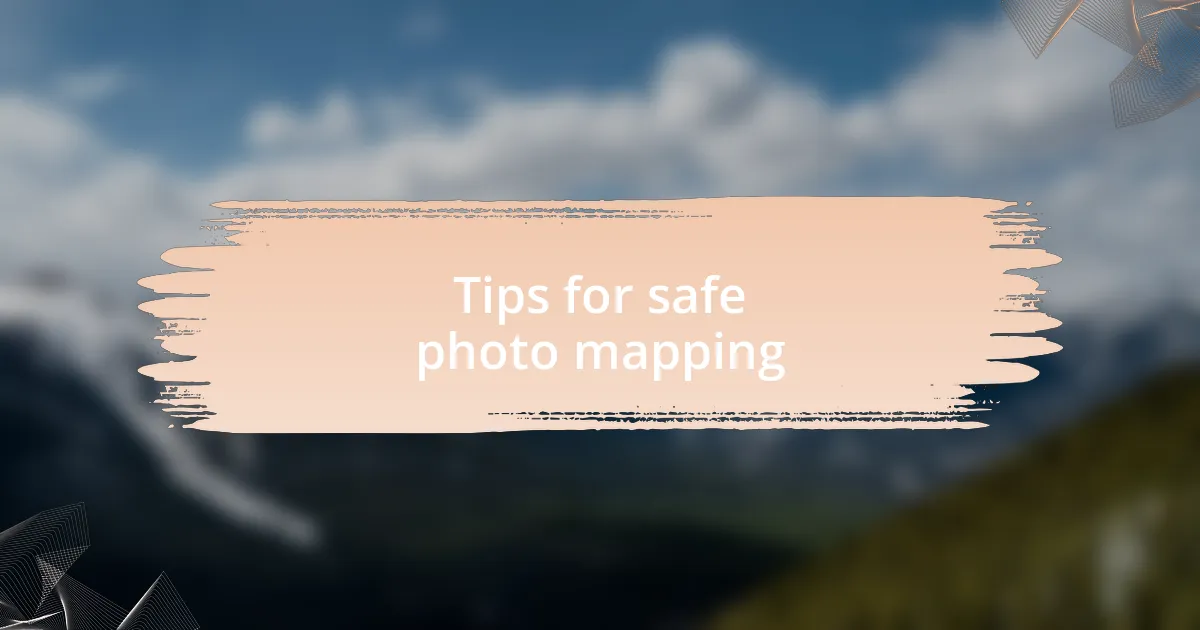
Tips for safe photo mapping
When it comes to safe photo mapping, my first tip would be to consider the timing of your posts. I once casually shared a photo from a family outing while still at the location, only to realize later how that could alert others to my presence. Have you ever thought about the implications of revealing your real-time whereabouts? It’s a good practice to post your pictures after leaving a location in order to maintain a layer of privacy.
Another vital step is to adjust your geotag settings. I remember how startled I was when I realized my photos were automatically tagged with my precise location. It’s both unsettling and empowering to take control of that feature by turning it off or limiting the visibility of your geotags. Isn’t it amazing how a little tweak can help safeguard your personal life?
Lastly, I suggest being selective with the locations you choose to tag. Once, I tagged a public park I visit regularly, and people I hadn’t seen in ages started reaching out. While it was nice to reconnect, it also made me realize how openly revealing my routine could invite unwanted attention. Have you considered how a simple tag could bring unexpected encounters? It’s worth weighing the benefits against the potential risks.
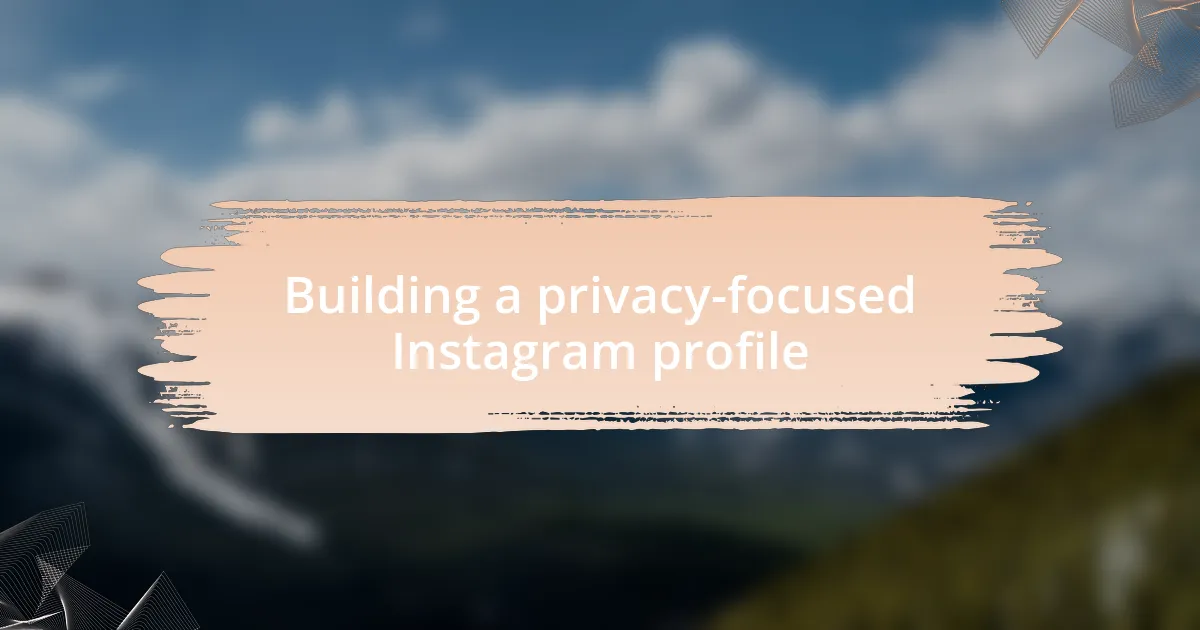
Building a privacy-focused Instagram profile
To build a privacy-focused Instagram profile, start with a mindful approach to your personal information. I was taken aback when I discovered how much data my profile was sharing, including my email and phone number. This experience taught me the importance of reviewing and adjusting my contact settings to ensure that only trusted individuals can reach me. Have you considered who has access to your details on social media?
Another essential aspect is to think twice before accepting follower requests. I remember a time when I mindlessly clicked “accept” for anyone who seemed familiar, only to realize later that some weren’t really people I wanted to connect with. Establishing a filter for who follows you helps maintain that boundary, and it’s empowering to curate your audience. What’s your strategy for managing follower requests?
Lastly, customizing your privacy settings can make a significant difference. I once spent an afternoon discovering all the hidden options Instagram offers, from limiting profile visibility to controlling who can see my stories. It felt liberating to take that step, reinforcing my control over my online presence. Have you explored your settings to see how you can enhance your privacy?